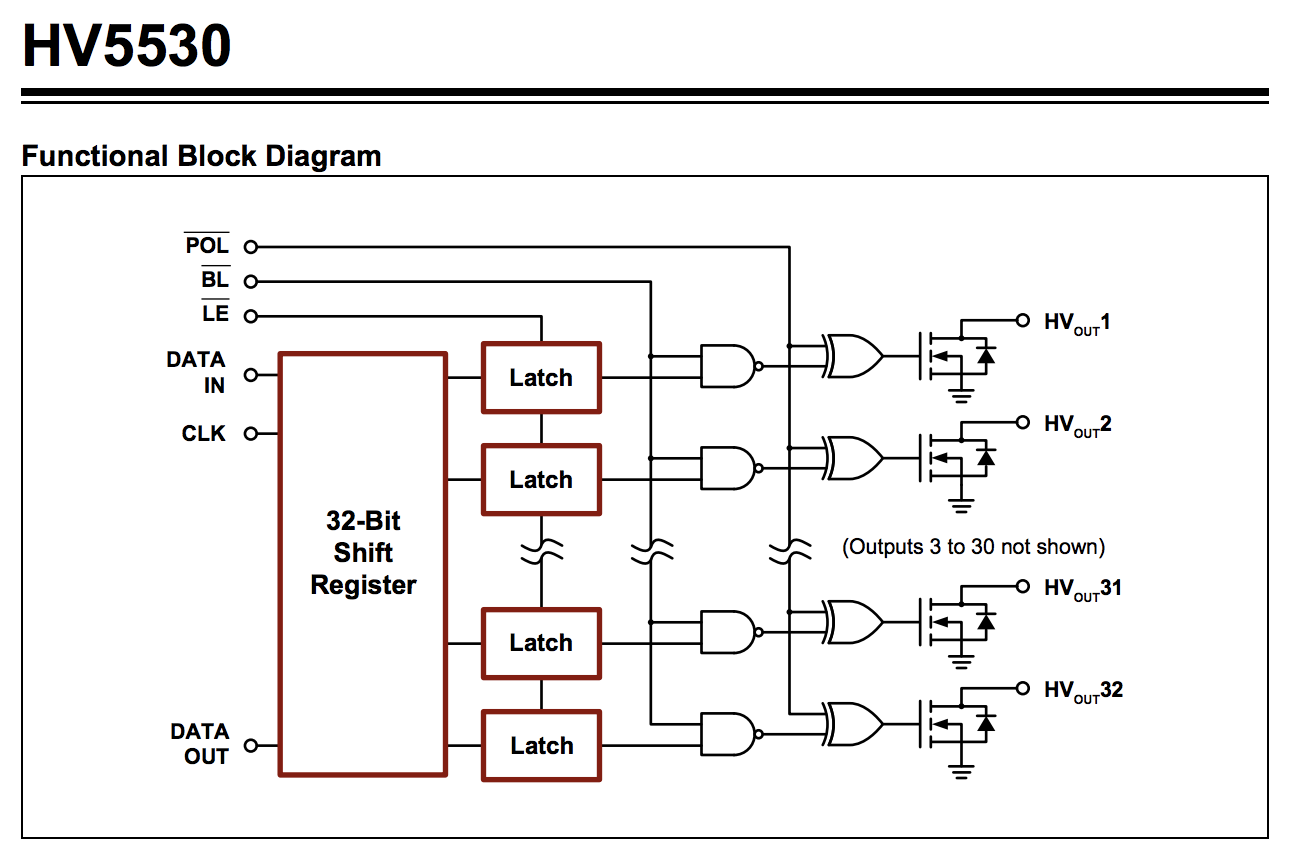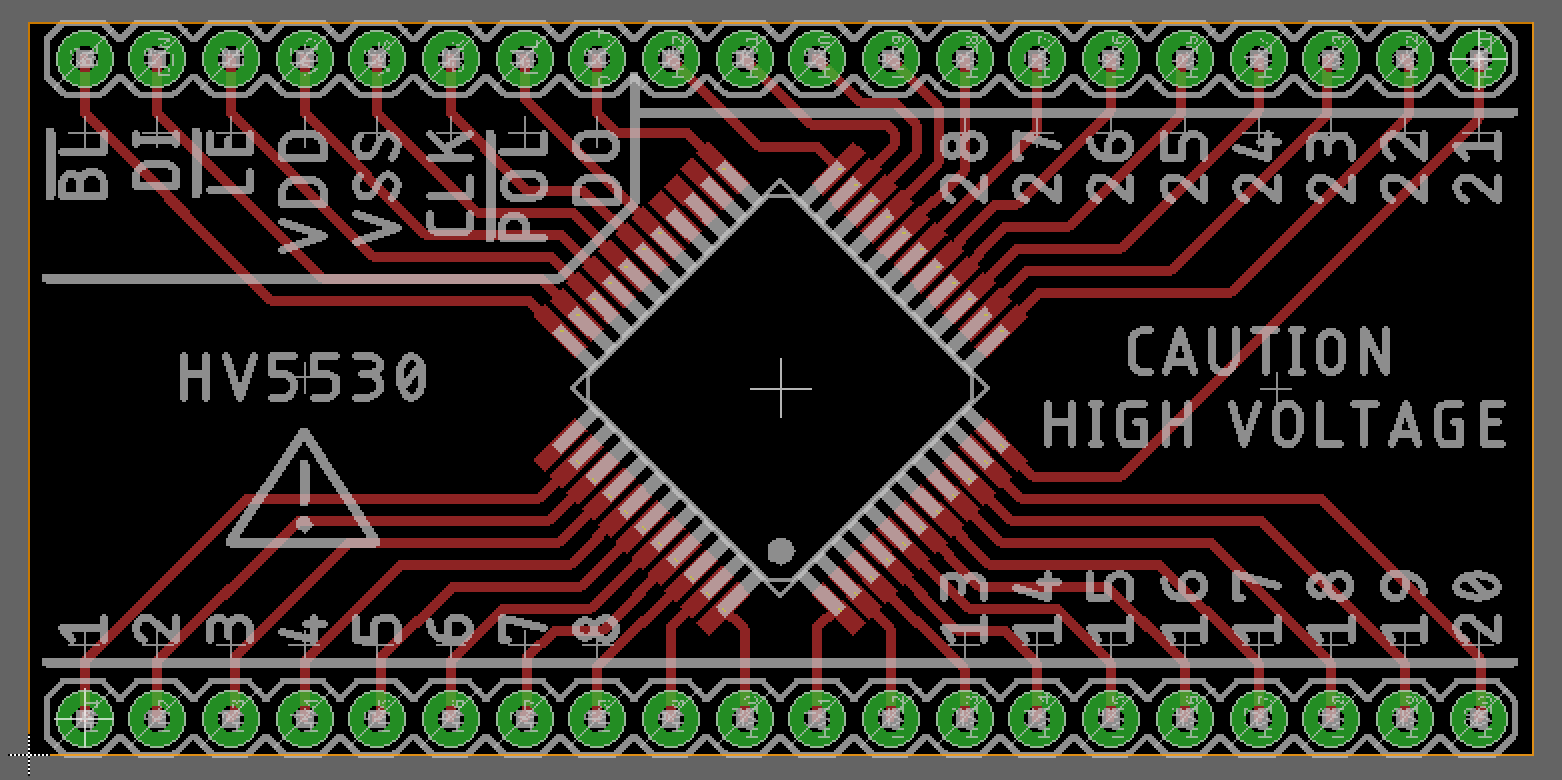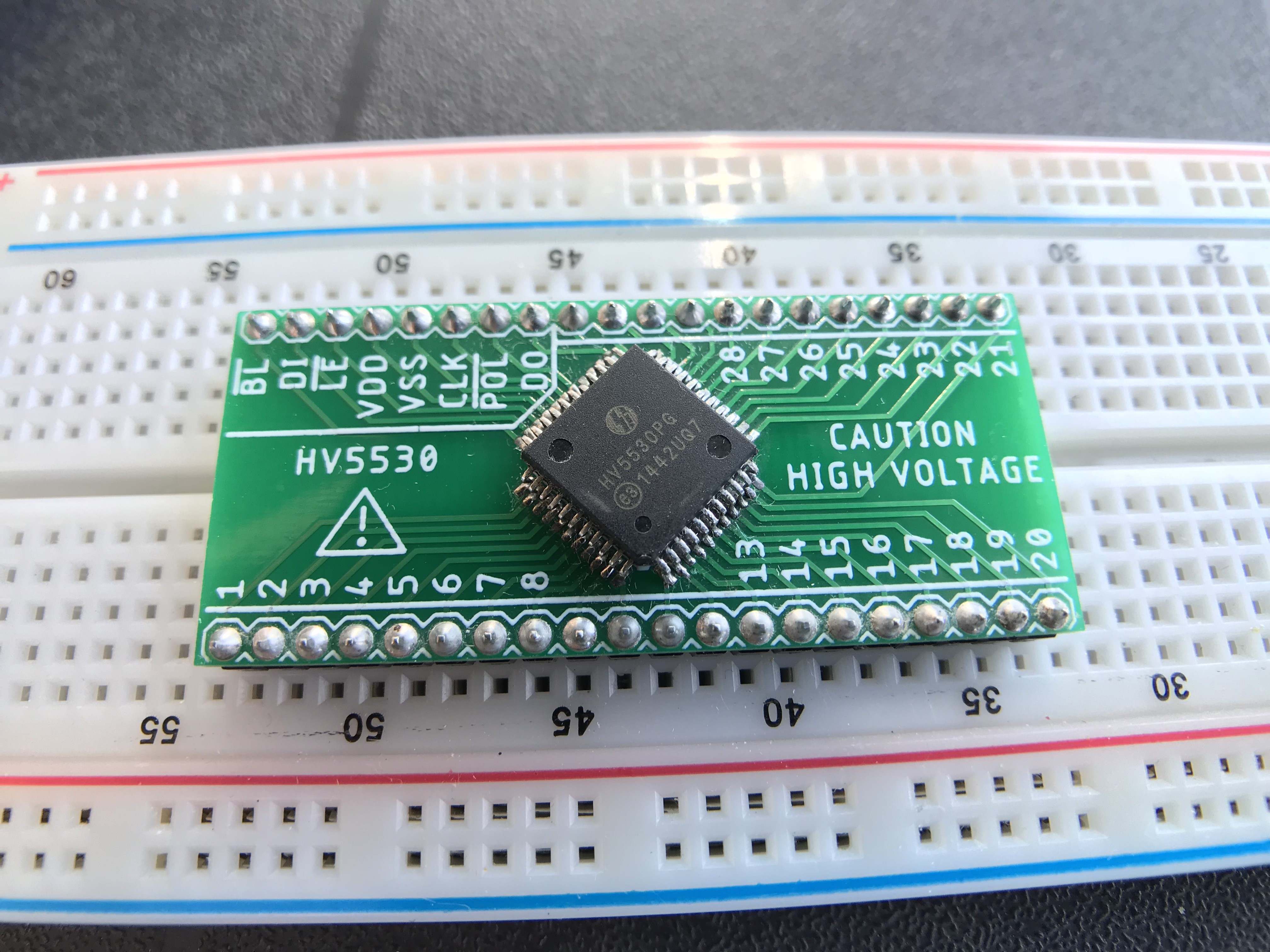Nixie driving is quite straight forward. Connect the anode to high DC voltage (170-250V according to corresponding datasheet), and ground the cathode of the digit you want to illuminate, leave the other cathodes floating.
There are a few drivers available, and other projects may use different chips and methods, but I like the HV5530 Shift Register. It handles up to 300V, is 32bits (ie. it can drive 32 cathodes independently), has a Latch (ie. is not constantly cycling through each output, but keeps a steady array of output once latched) and interfaces easily with Arduinos via SPI.

Ideally interfacing is made through 12V (cf. datasheet recommended operating conditions), but from experience it understands 5V inputs without problems. The ESP32 being 3.3V only, may have some communication problem and I may have to use a voltage translator in order to step up my data from the controller to the driver, from 3.3V to 12V.
The HV5530 doesn’t come in a DIP package and is therefore not breadboard friendly for development and prototyping. In order to perform some tests and make sure it suits the clock needs, I made a breakout board on Eagle and had it manufactured in China.


As you can see below, I made an error in the package dimensions, and had to bend the legs of the chip in order to solder it to the board. You can admire my poor SMD soldering skills here as well (first SMD soldering experience).

It’s ugly but it works...
The Breakout board schematic and (corrected) board design with the HV5530 Eagle library are available on this project's files.
Soon we'll have a look at the driver in action and some corresponding coding examples.
 Frederic L
Frederic L
Discussions
Become a Hackaday.io Member
Create an account to leave a comment. Already have an account? Log In.